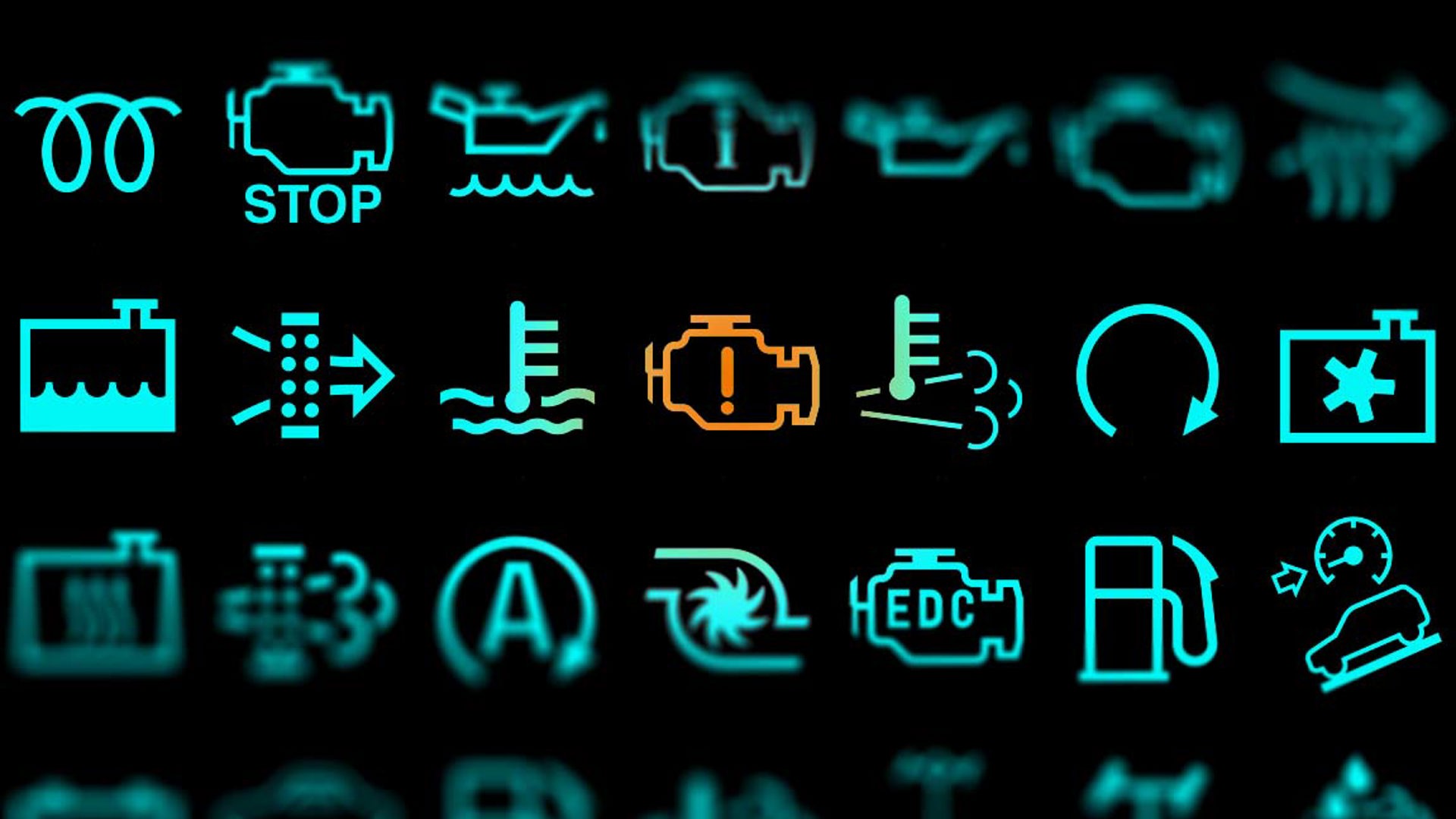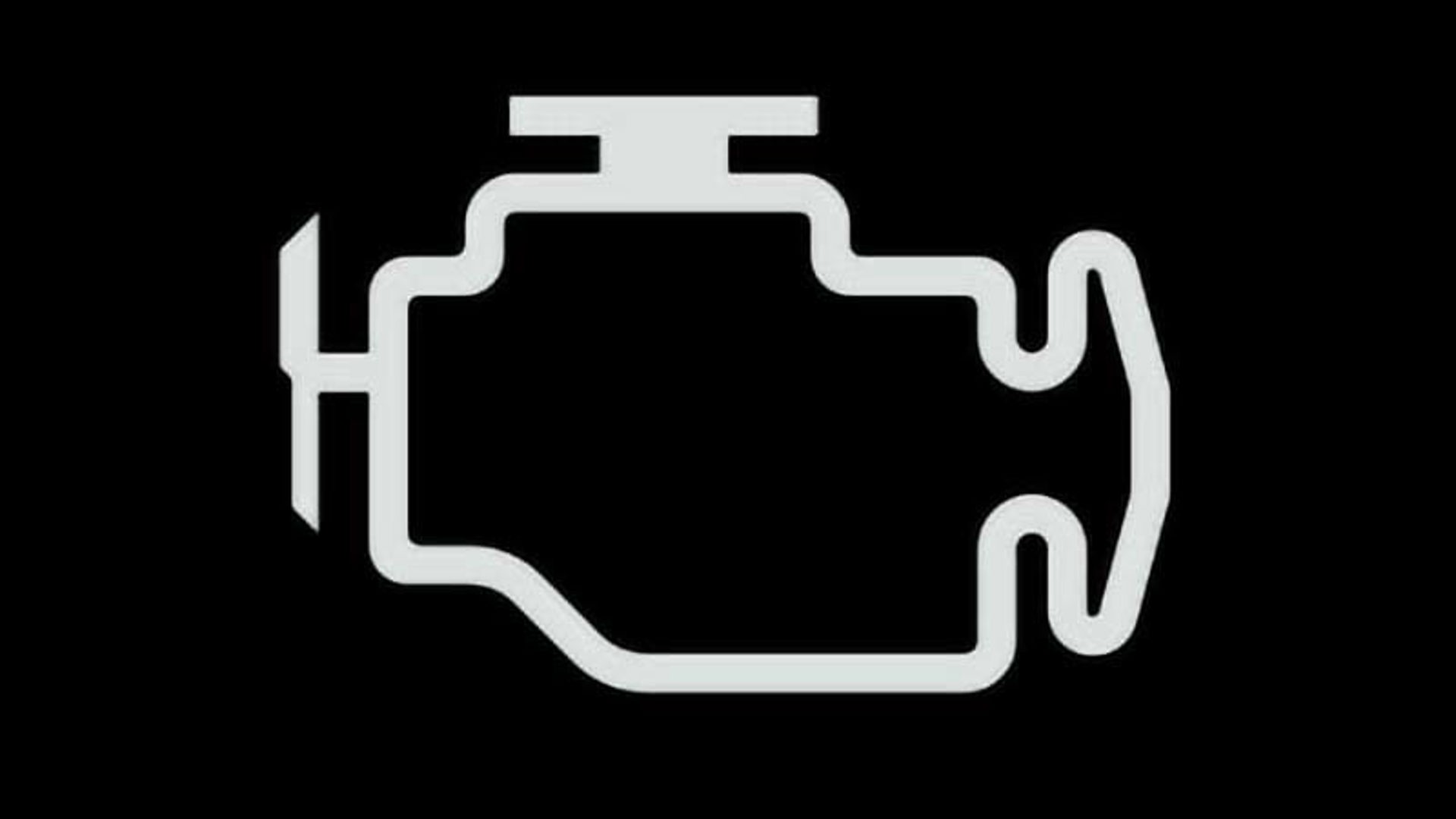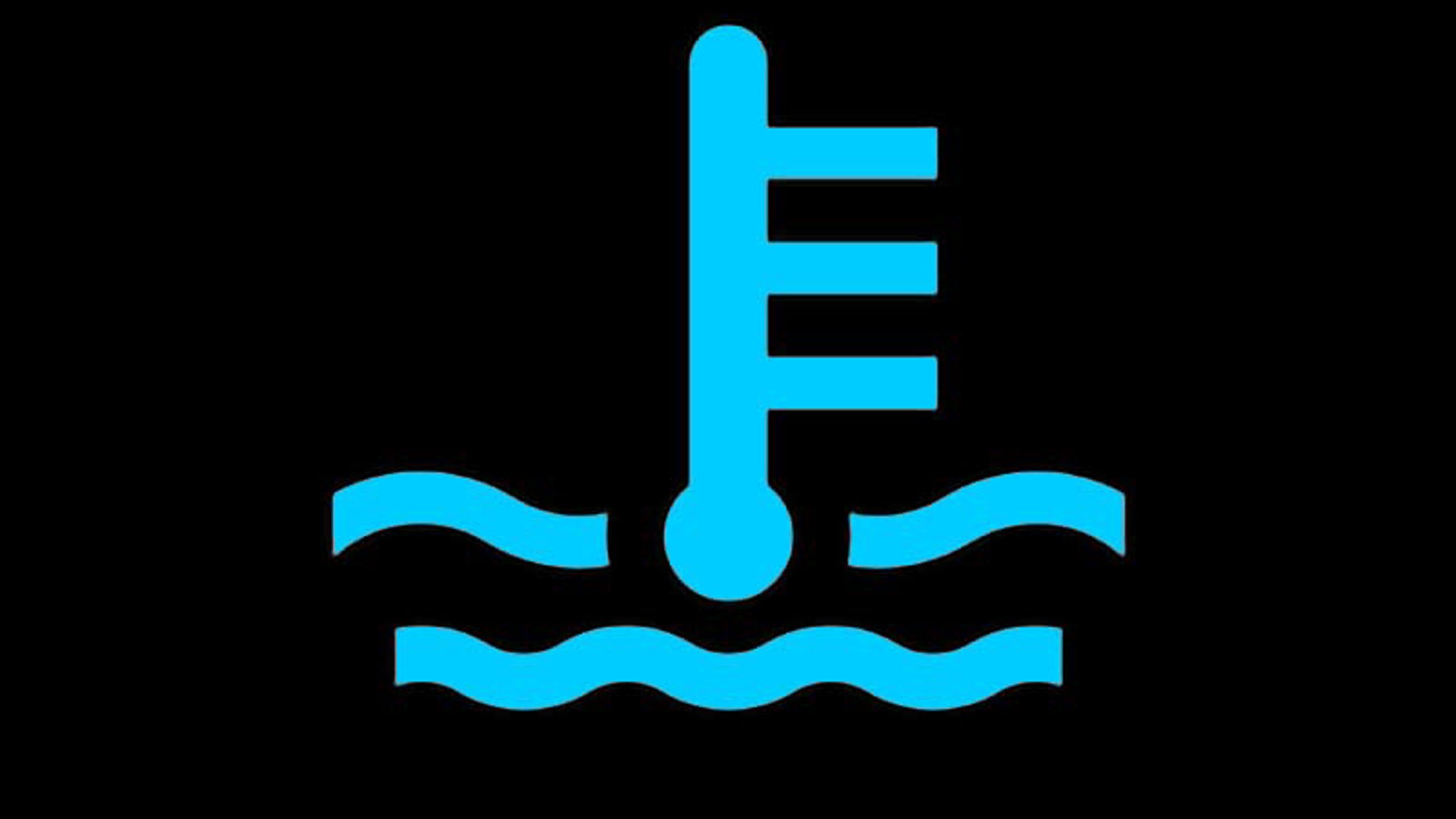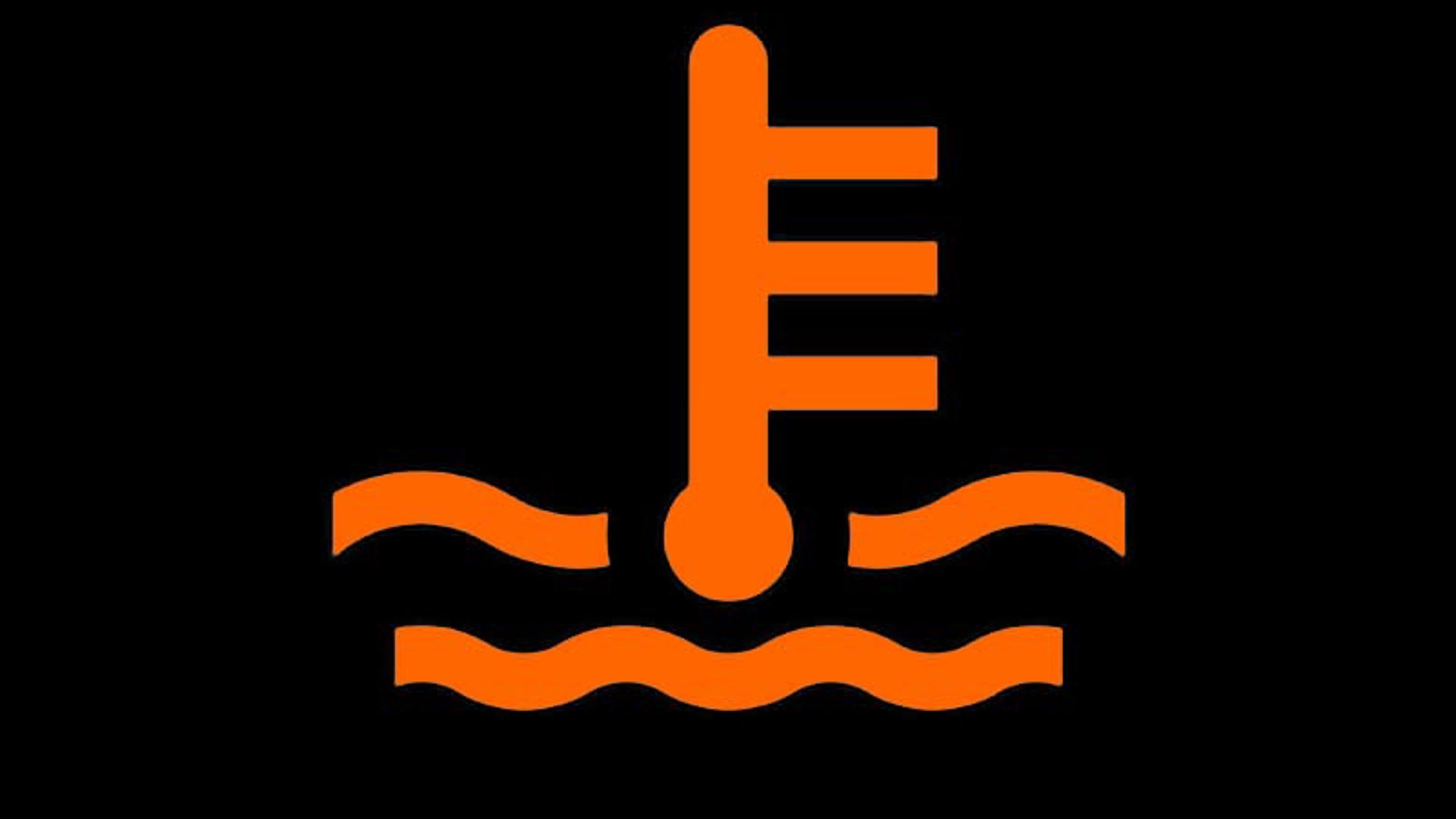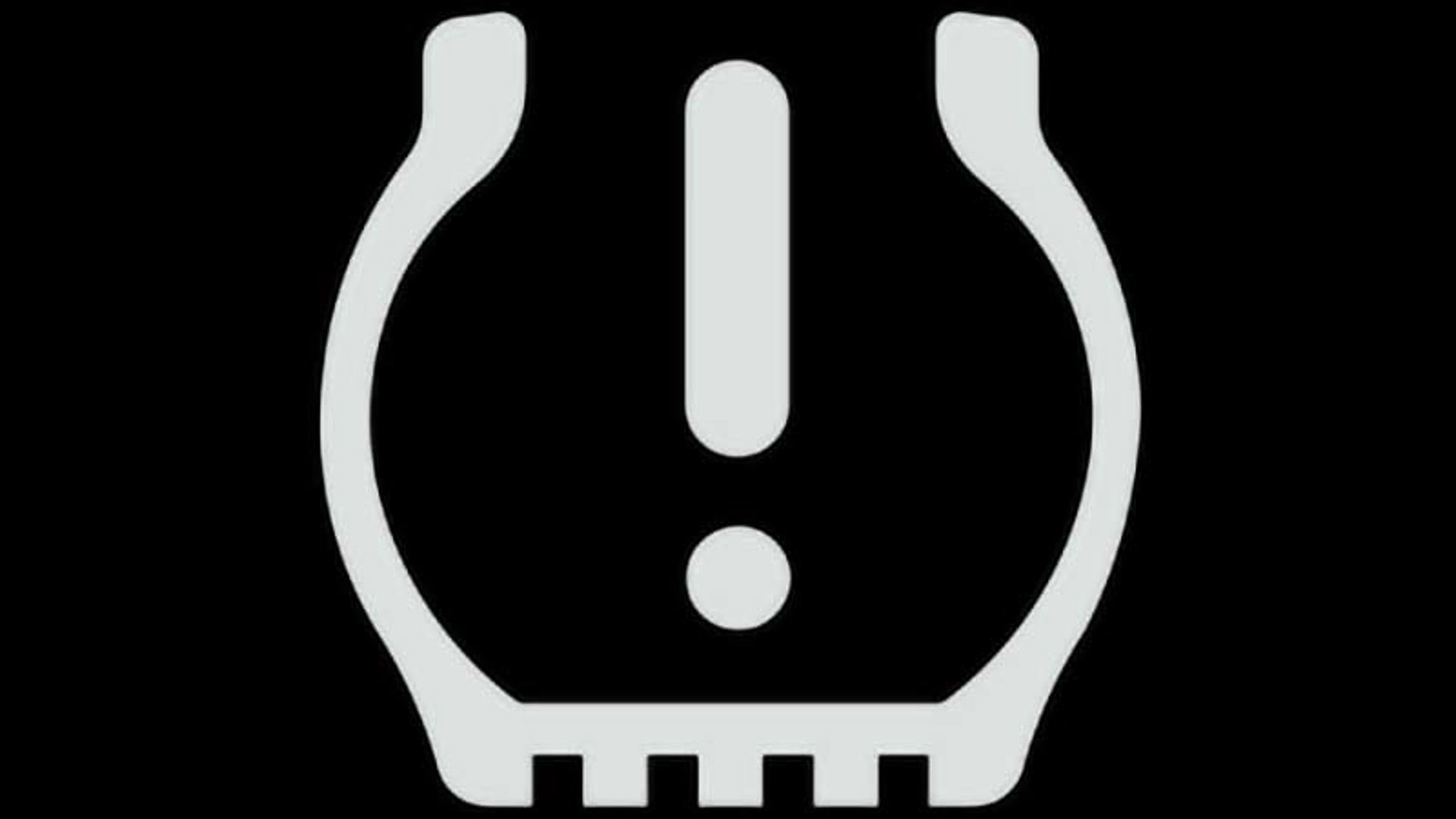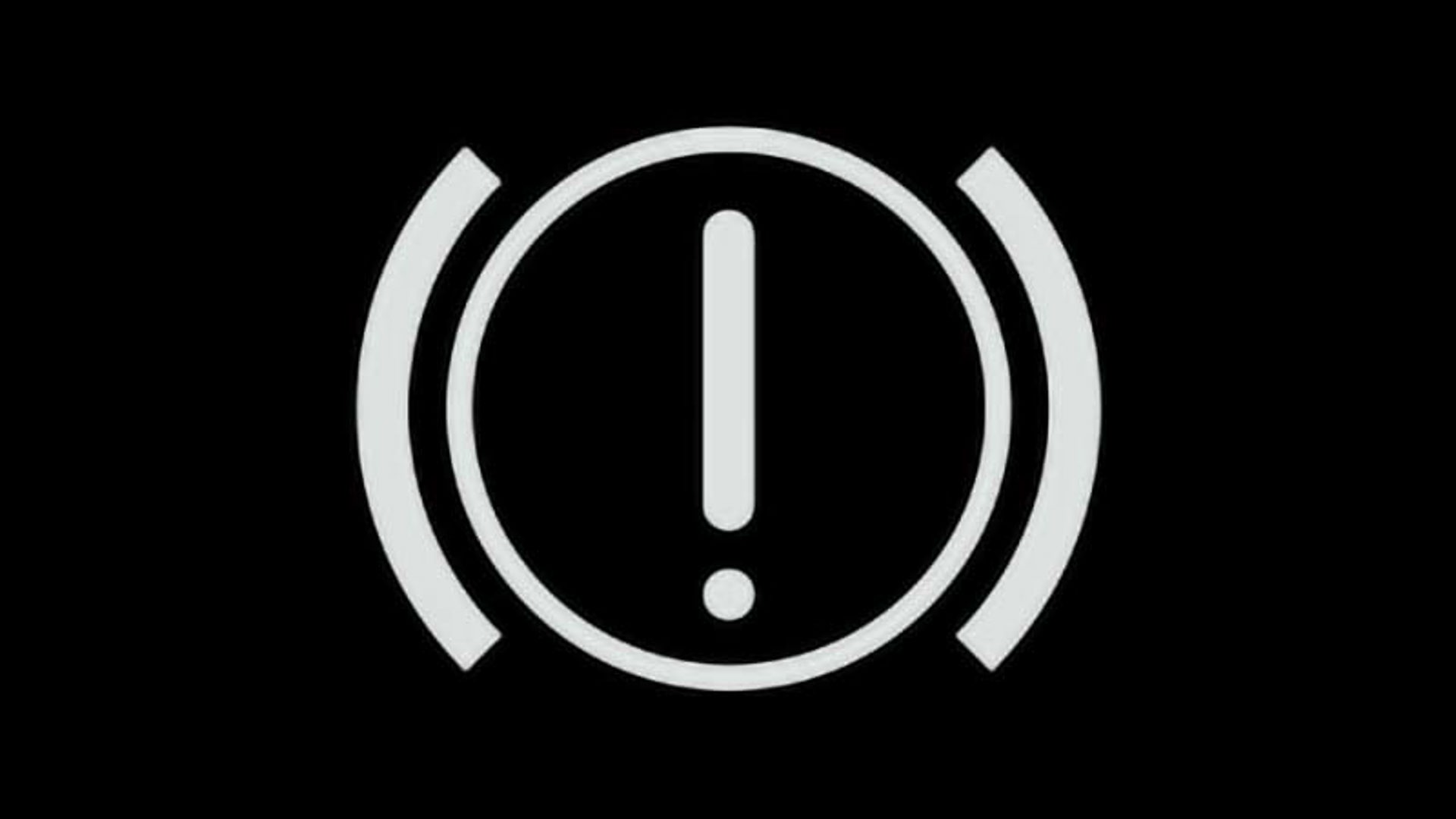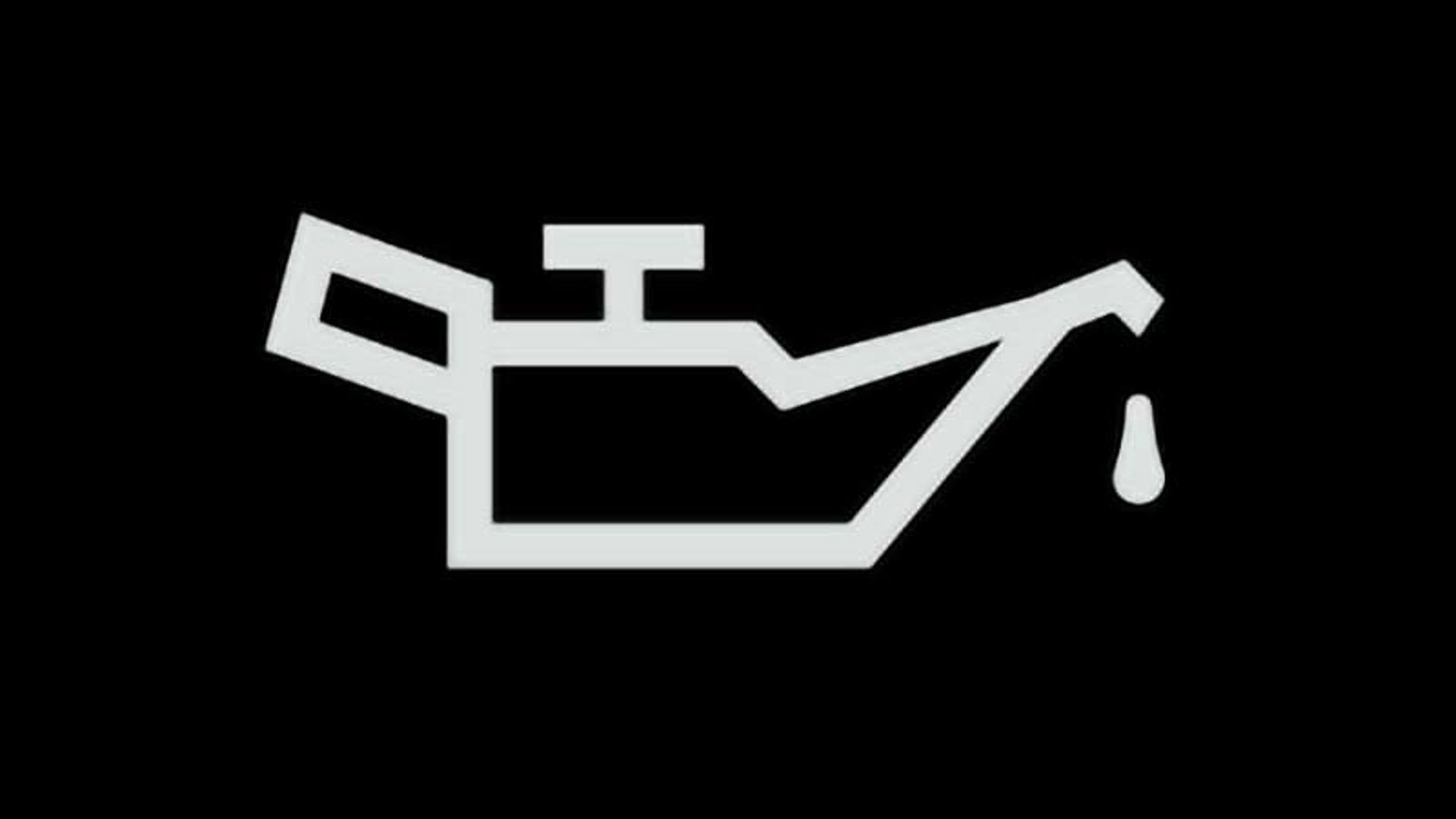Ever notice how your vehicle’s instrument cluster lights up like a Christmas tree for a moment whenever you start the engine? A multitude of warning lights appear for a few seconds at start-up, before quickly disappearing, one by one.
At ignition, your vehicle shows you all of its warning lights for a number of reasons. Mostly, it’s to help drivers confirm that the bulb that illuminates each individual warning light isn’t burned out. It’s also a reference as to what warning lights your vehicle has, and where they’re located.
It’s important to understand your vehicle’s warning lights. Hopefully they’re only ever lit up while you’re getting comfy, or making sure the kiddos are buckled in – but sometimes one or more of these warning lights may appear while you’re driving.
This means that your vehicle has a problem. And, if you don’t know what the light is for, or what to do about it (or if you choose to ignore the light), then your vehicle will have an even bigger problem.
Technician Paul Kennaley explains: “These lights exist for a reason. Most drivers notice them when they appear, and act on them right away – checking to see what the light means if they’re unsure, and taking action from there.”
But not all drivers heed the call of an instrument cluster warning light, and some choose to ignore them. Kennaley provides one extreme example.
“We had one customer come in with a completely destroyed engine, because they thought the low oil pressure warning light meant it was time for an oil change,” he says. “So, this customer kept driving without oil pressure, until the engine was destroyed before long.”
Don’t ignore warning lights – especially red ones
Warning lights in your instrument cluster don’t turn on for fun. They turn on because they want to tell you something.
“Hey, something’s not right – you should pull over and see what the problem is,” say your warning lights. Ignoring this request can lead to expensive repairs, damage to parts of your vehicle, or even an accident.
Below, we’ll look at some of the more common warning lights you may see in your ride’s instrument cluster, which ones are the most urgent, what to do if you see one, and what could happen if you ignore it. Note that all vehicles are different, and that the full story for your ride is located in its owner’s manual.
Knobby-looking blob (solid illumination)

Check Engine (general)
Message
“Hello! I have a problem in one of my systems that I’d like to tell you about, please.”
Urgency
Moderate
The Gist
This light appears when one or more of hundreds of possible problems is detected somewhere in your vehicle’s engine or driveline. The light tells you that there’s one or more problems – but not which, or how many, have been detected.
What to Do
You’ll need to have a diagnostic scan – where a special instrument is hooked up to your vehicle to figure out which problem(s) is causing the Check Engine light to illuminate. Your favourite mechanic has this instrument, and you may have a friend or family member that has one, too. When the diagnostic scan is executed, the detected problem will be revealed in about 30 seconds. It could be as minor as a loose fuel cap, or something much more serious.
What Happens if You Ignore It
Since a Check Engine light can appear for a multitude of reasons, there are a multitude of problems possible if drivers ignore it. These include reduced performance, reduced life of engine and driveline components, increased fuel consumption, and plenty more.
Knobby-looking blob (blinking or flashing)
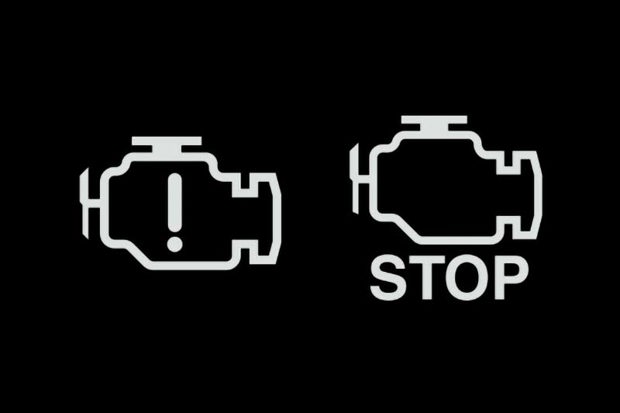
Check Engine (engine malfunction or failure)
Message
“I’m having a stroke, and I need you to help me immediately.”
Urgency
Extreme
The Gist
Where a solidly illuminated Check Engine light means you should take action as soon as possible, a blinking Check Engine light means you need to take action immediately. When your Check Engine light is blinking, there’s an extreme problem deep inside your engine which is causing a misfire. Misfiring engines, and components attached to them, can be severely and permanently damaged, very quickly.
What to Do
When you see a blinking Check Engine light, activate your hazard lighting, and pull over and park as quickly and safely as possible. Turn your engine off, and check your owner’s manual for further instructions. Your trip is likely over, and you’ll probably need to call a tow truck.
What Happens if You Ignore It
Continued driving with a blinking Check Engine light, even for short periods, can cause severe and widespread damage to your engine and emissions systems. In extreme cases, your car might even catch fire. Ignoring a blinking Check Engine light is considerably more expensive than having the vehicle towed to a mechanic for assessment and repair.
IMPORTANT
Some drivers try to “fix” a Check Engine light by disconnecting their vehicle battery for a period of time, and then reconnecting it, hoping to reset the condition. This is a bad idea, doesn’t fix anything, and can cause further problems. Do not attempt to fix a Check Engine light by disconnecting your battery.
Thermometer on waves (Blue)

Low engine temperature
Message
“Just give me a moment to warm up, please.”
Urgency
None
The Gist
This light appears on some vehicles for the first few moments of driving, to tell the driver that the engine isn’t yet warmed up.
What to Do
Your engine is like an athlete – it doesn’t like working too hard until it’s warmed up a little. So, while this light is on, it’s best to avoid rapid acceleration or hard driving. Drive as normal, and the light will go off after a moment – slightly longer if it’s very cold outside, or if the vehicle has been parked a while.
What Happens if You Ignore It
Nothing. This light doesn’t represent a problem, and requires no driver action.
Thermometer on waves (Red or Orange)
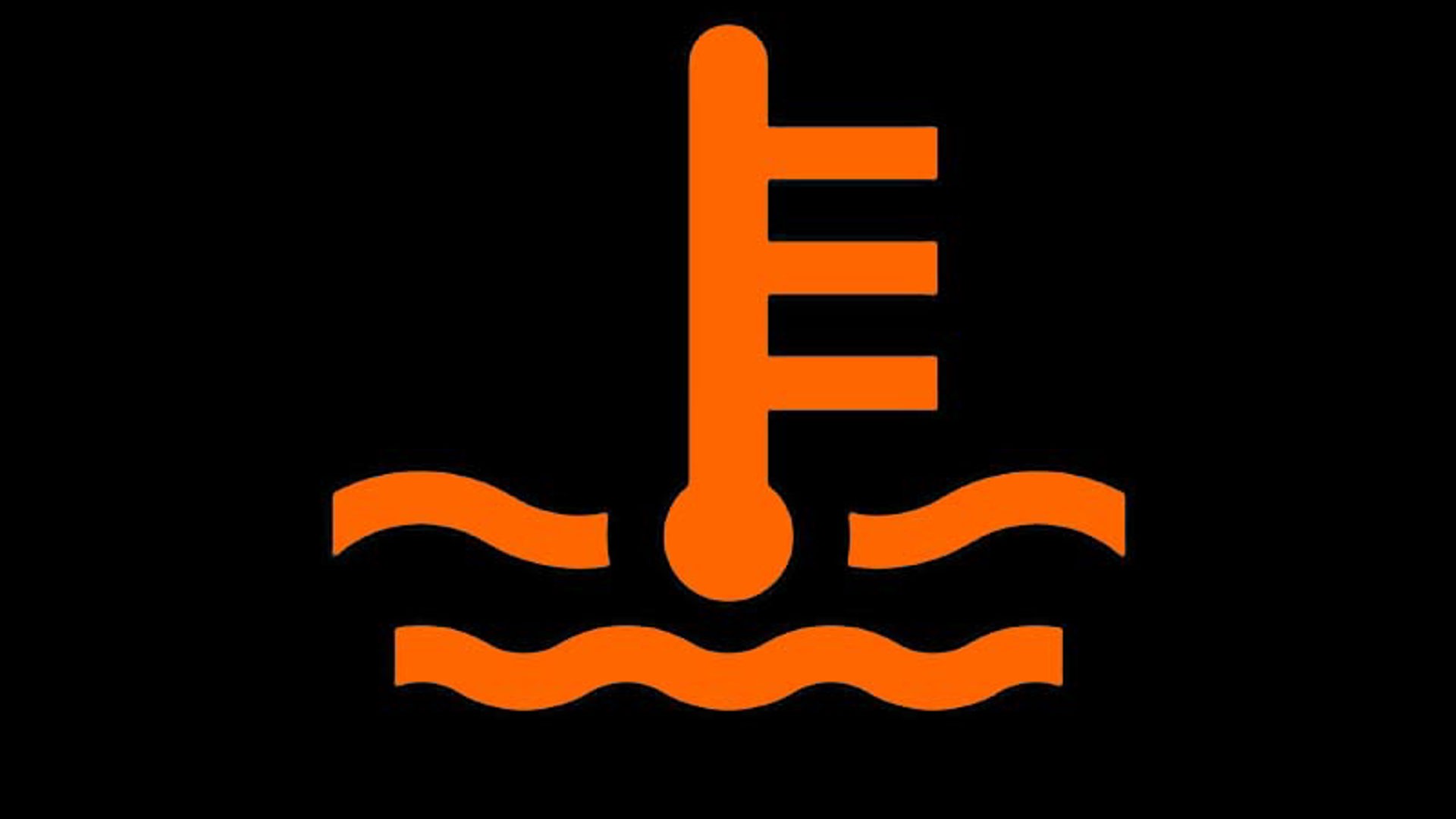
High engine coolant temperature (This light may be accompanied by a high reading on the temperature gauge, if equipped.)
Message
“I’m running a high fever and am in immediate danger.”
Urgency
High
The Gist
While your vehicle is running, liquid coolant (sometimes incorrectly called “water”) is pumped through various passageways inside of the engine. The coolant moves in a constant loop through your engine, where it absorbs heat, gets hot, and then flows into the radiator, which cools it down. Once cooled in the radiator, coolant is pumped back into the engine to absorb more heat. This process is continuous, and intends to keep your engine running at a specific, safe temperature.
Your engine is constantly aware of the temperature of its coolant, and the red or orange thermometer icon appears, possibly accompanied by a high reading on the coolant temperature gauge (if equipped), when the temperature of the coolant exceeds a safe limit. Like us humans, a specific temperature range is considered safe. Any hotter, and problems occur. But unlike us, your ride can’t chill out in bed for two days with a bottle of NyQuil when it’s running a temperature, and without your immediate attention, high engine coolant temperatures can cause extensive damage, very quickly.
What to Do
When you see a red or orange thermometer icon, your engine is overheating – right now. Exit the roadway as quickly as safely possible, and crank your vehicle’s heater system to max heat and max fan speed, which can help cool the engine down. Prepare to turn the engine off, but check your owner’s manual first, by looking up “Overheating” in the index. Follow the instructions. If your owner’s manual is missing, you’re typically best to run the engine a minute or so with the heater maxed out, and then shut the engine off. Do not open the radiator cap.
What Happens if You Ignore It
Even a few moments of driving with an overheated engine can cause expensive damage. High temperatures can stress or warp delicate internal engine parts, ruin your head-gaskets, destroy cooling system components, or even start a fire in extreme cases. Repair bills in the thousands are likely if you continue driving a vehicle with an overheated engine.
Tire tread/cutaway with exclamation mark

Tire pressure monitoring system (TPMS) warning
Message
“Hello, I may be about to lose a shoe.”
Urgency
Moderate to high
The Gist
If your vehicle is equipped with a tire pressure warning system (TPMS), this warning light illuminates when the inflation pressure in one or more tires falls below a safe limit. This could be the result of a puncture, leak, or something else.
What to Do
When you see a TPMS warning light, assume that you’ve got a flat tire, and that control of your vehicle is compromised. Then, pull over safely and as quickly as possible and check your owner’s manual for further instructions. You’ll want to inspect all tires to see if any are flat, and to look for signs of a puncture or other damage.
Use a tire pressure gauge to confirm whether or not all tires are inflated properly, as per instructions in your owner’s manual. If you have a flat or severely deflated tire, do not continue to drive.
What Happens if You Ignore It
Ignoring a TMPS warning light can be a safety hazard, as driving on a flat or under-inflated tire can dramatically reduce vehicle control, result in sudden destruction of the tire in a full blowout, or cause an accident.
IMPORTANT
It’s important to carry a manual tire pressure gauge in your vehicle at all times. These are available at most retailers for $8 or less. If you see a TPMS warning light, the manual tire pressure gauge lets you double-check your tire pressures, since many TPMS systems can get confused and set off false alarms. Do not assume this is the case if you see a TPMS warning light, and be sure to check the tire pressure manually.
Note that tire inflation pressure cannot be checked by visual inspection, and that a tire with dangerously low pressure might look the exact same as a properly inflated one.
Bracketed circle with exclamation mark
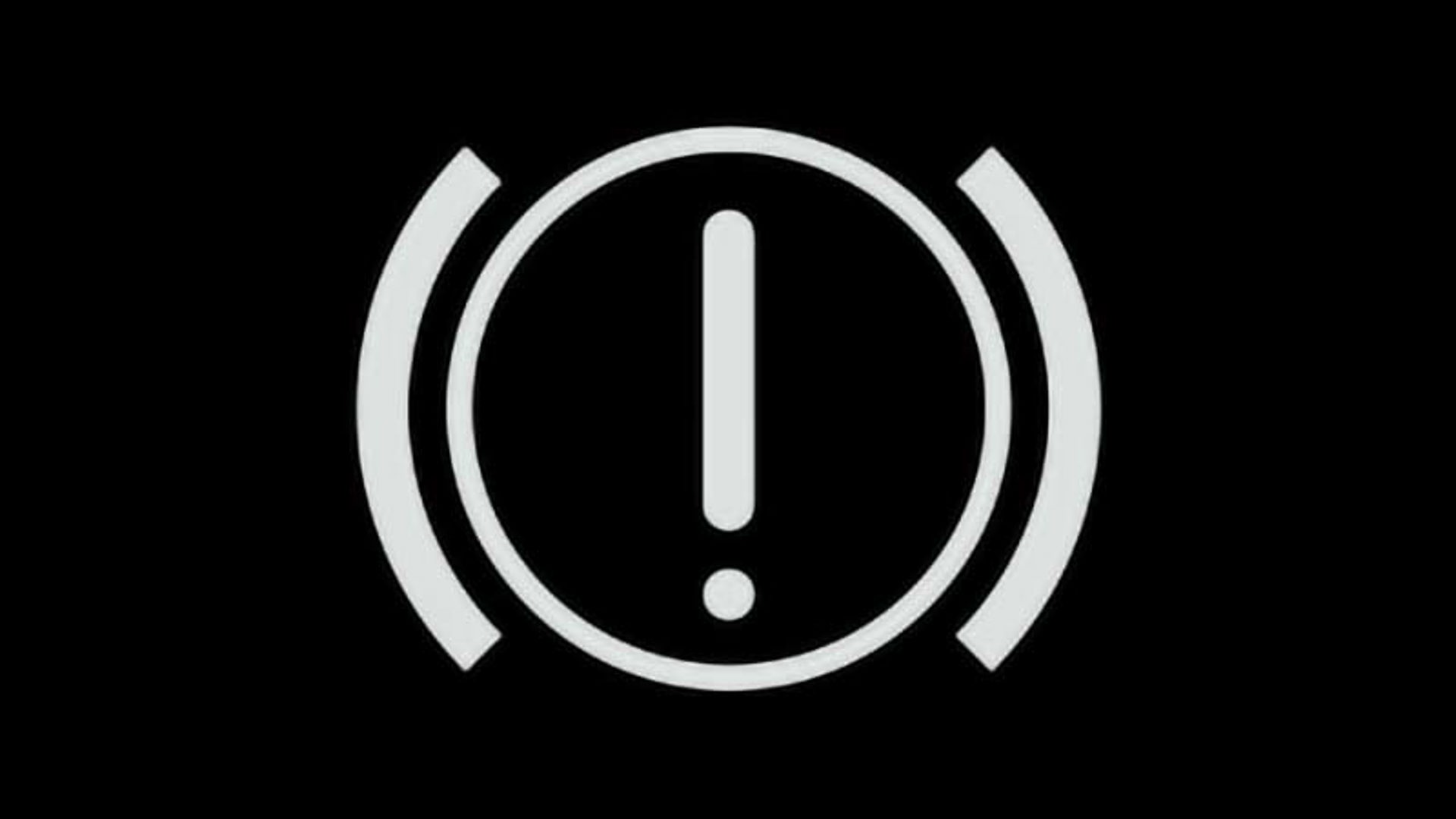
Brake system malfunction or failure
Message
“Hello! FYI, I may not be able to stop.”
Urgency
Extreme
The Gist
Like the Check Engine light, your vehicle’s brake system warning light can appear for a variety of reasons, from minor to extremely dangerous. Don’t mess around with brakes – this warning light is serious until proven otherwise.
What to Do
When you see the brake system warning light, there may be a burned out brake light bulb, a flaw in the system wiring, or a total loss of brake system functionality. The brake warning light tells you that there’s a problem, but not what it is. Assume that your brakes have failed completely – pull over safely, ASAP. From there, check your owner’s manual for further instructions.
What Happens if You Ignore It
Ignoring a brake warning light that’s appeared because of a serious problem can cause an accident, injury, or death, as your vehicle may have drastically limited ability to stop. Do not assume that your brakes are actually fine just because they seem to be functioning as normal when the light comes on. They could be on the verge of failure at any moment. Your owner’s manual outlines the next steps to take – and if it’s not available, you’re best to have the vehicle towed to a repair shop for professional assessment before driving it, unless you like ambulance rides.
Variants of this symbol may show “P” or “ABS” in place of the exclamation mark, and refers instead to the parking brake or anti-lock braking system, respectively.
Seated Figure with Circle

Airbag disabled; airbag malfunction
Message
“My airbag system has a fault and has been disabled.”
Urgency
High
The Gist
Here’s another warning light that can pop up for numerous reasons. When you see an airbag or supplemental restraint system (SRS) light, a problem has been detected within your vehicle’s airbag system, and that system is now disabled. At this point, you don’t know which component is experiencing trouble, but you do know that your airbags will not deploy in the case of an impact. Possible causes of an airbag warning include corroded wiring, failed sensors, or an electronic connector that’s come loose.
Variants of this symbol can refer to a passenger airbag, or side-impact airbag.
What to Do
As soon as possible, have the vehicle attended to by a trained technician, who will use diagnostic equipment to determine what the problem is. In any case, your airbag system is not working properly, and you’ll want to have it inspected as soon as possible.
What Happens if You Ignore It
Ignoring an airbag warning light can lead to injury or death in the event of a crash, as the system is designed as a life-saving supplement to your vehicle’s seatbelts. If the airbag system in your vehicle isn’t working properly, you and your occupants are not fully protected in the event of a crash.
Oil Can
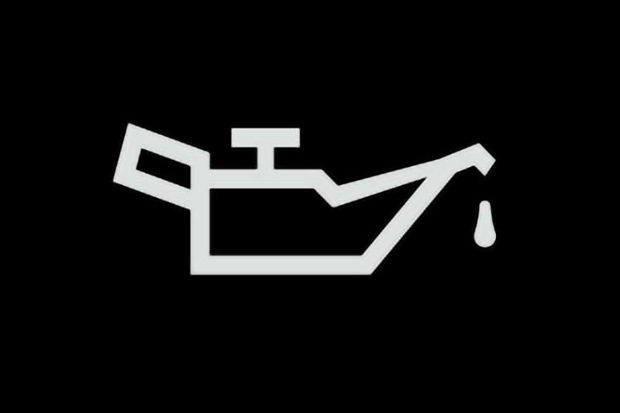
Engine oil low or outside parameters
Message
“I am having a heart attack.”
Urgency
Extreme
The Gist
Your engine requires a constant, pressurized flow of engine oil throughout its various components at all times while it’s running. This light illuminates when that oil pressure falls below a safe limit. The appearance of this warning light means that your vehicle’s engine is now in immediate danger of extreme damage. Continued driving for even a few moments can destroy your engine.
What to Do
Oil is the life-blood of your engine, and low oil pressure means that it’s not flowing and pumping properly for one of several possible reasons. This is the automotive equivalent of a heart attack – and like a heart attack, low oil pressure requires immediate action, not a check-up next time you’re in to see the doctor (or mechanic). Pull over immediately and turn the engine off. Check your owner’s manual for further instructions. Your trip is now over, and you’ll likely need a tow truck.
What Happens if You Ignore It
Continued driving with this light illuminated, even for a moment or two, can cause your engine to seize up, break, and fail catastrophically.
